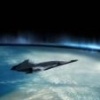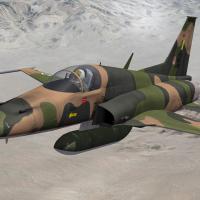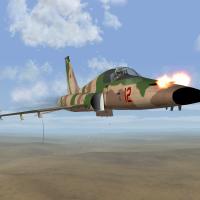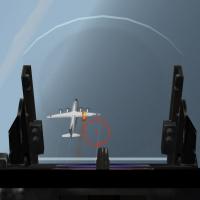Search the Community
Showing results for tags 'northrop'.
Found 11 results
-
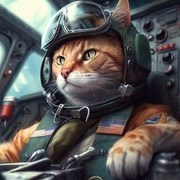
Northrop's F-5F Ejection Seat
Gavin1976 posted a topic in Thirdwire: Strike Fighters 2 Series - File Announcements
View File Northrop's F-5F Ejection Seat Northrop's F-5F Ejection Seat v1.00 (2018.07.28) Northrop's F-5F ejection seat with front and rear seats for finer details ----------------------------------------------------------------- [StudentPilot] SystemType=PILOT_COCKPIT Position=0.0,3.10,0.620 PilotModelName=16th_TFS_Pilot_Orange_02 SeatModelName=NorthropSeat_F-5F_Front SeatPosition=0.0,3.11,0.620 MinExtentPosition=-0.32,3.78,0.75 MaxExtentPosition= 0.32,2.65,-0.50 CanopyNodeName=RearCanopyFrame CanopyAnimationID=8 SeatID=1 [Pilot] SystemType=PILOT_COCKPIT Position=0.0,1.70,0.820 PilotModelName=16th_TFS_Pilot_Orange_01 SeatModelName=NorthropSeat_F-5F_Rear SeatPosition=0.0,1.70,0.820 MinExtentPosition=-0.32,2.18,1.0 MaxExtentPosition= 0.32,1.07,-0.800 CanopyNodeName=FrontCanopyFrame CanopyAnimationID=9 SeatID=2 ----------------------------------------------------------------- good flight ! Taylor Gavin 2018.07.28 Submitter Gavin1976 Submitted 07/28/2018 Category Pilot Mods-
- 1
-

-
- northrop
- ejection seat
-
(and 1 more)
Tagged with:
-
Version 1.0.1
132 downloads
Northrop's F-5F Ejection Seat v1.00 (2018.07.28) Northrop's F-5F ejection seat with front and rear seats for finer details ----------------------------------------------------------------- [StudentPilot] SystemType=PILOT_COCKPIT Position=0.0,3.10,0.620 PilotModelName=16th_TFS_Pilot_Orange_02 SeatModelName=NorthropSeat_F-5F_Front SeatPosition=0.0,3.11,0.620 MinExtentPosition=-0.32,3.78,0.75 MaxExtentPosition= 0.32,2.65,-0.50 CanopyNodeName=RearCanopyFrame CanopyAnimationID=8 SeatID=1 [Pilot] SystemType=PILOT_COCKPIT Position=0.0,1.70,0.820 PilotModelName=16th_TFS_Pilot_Orange_01 SeatModelName=NorthropSeat_F-5F_Rear SeatPosition=0.0,1.70,0.820 MinExtentPosition=-0.32,2.18,1.0 MaxExtentPosition= 0.32,1.07,-0.800 CanopyNodeName=FrontCanopyFrame CanopyAnimationID=9 SeatID=2 ----------------------------------------------------------------- good flight ! Taylor Gavin 2018.07.28- 2 comments
-
- 3
-

-

-
In part 2 we continue to look at the Northrop F-20A Tigershark and how its story intertwines with other aircraft programs of the 1980s. Another F-20 is flown The second Pre-production F-20 (82-0063 / GI1001) was flown in August 1983. This configuration included a bigger radome, enlarged canopy, and an up-rated 17,000 lb thrust F404 engine. (Note: The first pre-production jet mentioned in part 1 (82-0062) also received the 17,000 lb thrust engine in 1983.) Also note: “Pre-production” means that Northrop was not going through a Prototype or Full Scale Development (FSD) phase so these aircraft were actually intended to be sold with the F-20 upgrades and changes. F-20 #2 (Northrop Grumman) Let’s get some people on board to really help sell it (F-20 Tigershark Vs F-15) You remember the Light Weight Fighter Mafia right – well they had mostly since left the Pentagon and had reformed as the err “Reformers” (or “Critics” to the USAF), which included John Boyd, Ex USAF Col Everest Riccioni, Pierre Sprey, Chuck Spinney and James Fallows. James Fallows was Washington editor for The Atlantic Monthly.( Described as an anti-military liberal journalist) Fallows had cottoned onto the Reformers in 1979 when researching ideas on how to cut military budgets and had interviewed John Boyd who was still smarting over what was done to the F-16. Fallows was able to gain publicity for the Reformers and their ideas, for example through the best-selling book National Defense in 1981. The Reformers had jumped on the AIMVAL/ACEVAL (Air Intercept Missile Evaluation / Air Combat Evaluation) results in the late 1970s where Red force F-5s had faced off against a blue force of F-15 and F-14s, and the book National Defense was the perfect platform to spin the results. The book took choice cuts from the results carefully omitting information that didn’t fit their agenda and the press went for it, with the Chicago Tribune printing that the F-15 had been “fought to all but a draw” by the F-5 and CBS calling the F-15 a “turkey”. In National Defense reformer Everest Riccioni claimed F-15s couldn’t fly many sorties and so the Air Force actually had a “Phantom fleet”. He then claimed the Air Force could buy 1000 advanced F-5s (The F-20) for the cost of 250 F-15s and generate 10 times more sorties in wartime (2500 v 250). Did I mention that Northrop had hired Everest Riccioni and Pierre Sprey at the time and Riccioni was working on the F-20 program. In reality what had happened in AIMVAL/ACEVAL was that tactics used were not entirely realistic and a lot of it was skewed in favour of the F-5. Despite this the F-15 still had a 2.5 Kill ratio in favour and the AIM-7 (another Reformers target) was responsible of the majority of the simulated kills. From the USAF point of view neither Pierre Sprey or Everest Riccioni had any credibility compared to John Boyd (who had taken a back seat at this stage) and the scraping nails account of this episode suggests this did more harm than good to the F-20 program regarding US support. F-15C - Can you say “it’s a Turkey” in a Pierre Sprey accent? (Airliners.net) What else could have upset the USAF Although a typical sales tactic, Northrop had no real data to back up any claims they were making for the F-20 such as cost, reliability and sortie rate. For example, as RAND point out………. Northrop claims of reliability on the F-20 were pretty much irrelevant. Only 1500 flights in a “test” environment with hand-picked engineers cannot be compared to years of “operational” experience the F-16 had around the world maintained by guys with varied experience in different environments. True cost and sortie rate could never be known as none ever went operational. Some of Northrop’s claims also seemed to stay the same despite airframe and avionics changes that would increase cost. F-20 goes to Top Gun Back in the mid-1970s the USAF were allocated F-5s that never made it to South Vietnam that were wanted because they were very similar in performance and some other aspects to the MiG-21 and so were perfect to use as aggressors at Red Flag. Naturally in 1984 when the US Navy wanted a MiG-29 simulator / aggressor for Top Gun, Northrop seeing a way in offered the F-20A at a low price with its promise of lower operating costs. Senator Pete Wilson had managed to get money through congress in the hope the F-20 was selected. General Dynamics also offered the F-16N (F-16C Block 30 with gun replaced by ballast) for a very low £11m each which was the same unit price as the F-20. The USN went with the F-16 which they believed to be a better simulator for 4th Gen threats…and it probably was being a bit larger with superior performance, also high-tech avionics were not required, in fact they stuck in the basic APG-66 radar from the A model. The USN literally got steal of the century on unit cost here…………. or they would have done if someone at the Navy hadn’t specified titanium wing attachment brackets without testing them (another story). F-16N (Lockheed Martin) Another F-20A flies The third pre-production F-20 (82-0064 / GI1002) first flew on May 12 1984 and was similar to 82-0063 / GI1001 in configuration it seems. F-20 Pre-production figures from Flight Manual F-20 #3 (Northrop Grumman) Tragedy befalls Northrop and the program On the 10th October 1984 the first pre-production F-20 (82-0062) crashed at Suwon Air Base in Korea killing pilot Darrell Cornell. Cornell had apparently succumbed to G-LOC after a 9G pull up as part of practicing an established demonstration routine with the aircraft appearing unresponsive after the maneuver. The Northrop F-18L and McAir All this time Northrop had been having a handbag face slapping argument with McDonnell Douglas (McAir). In October 1979, Northrop filled a $700 million antitrust suit against McAir. Northrop had developed the YF-17 for the Light Weight Fighter (LWF) competition in 1974 and this was later developed into the FA-18 carrier-based fighter under some kind of teaming agreement. Under this agreement McAir as prime contractor would build 60% of the carrier capable FA-18 and Northrop would build 40%. For the land-based F-18L Northrop were prime contractor building 60% and McAir building 40%. The Northrop F-18L was what might have been if the YF-17 had won in 74. Without all the extra weight needed for carrier ops and a totally different 9G structure it was over 2500 lbs lighter with a top end of M2.0 and was initially specified with a hard wing losing 3000 lbs of fuel reducing its range. Northrop basically had accused McAir of trying to monopolize the business and basically interfering with the F-18Ls chances of success in the export market by launching active sales efforts for the FA-18 to potential customers when they showed interest in the F-18L. Another suit also claimed McAir was unfairly using Northrop technology from the F-18L to sell its own FA-18. McAir then counter-sued against Northrop, claiming that the Northrop F-20 avionics had been taken from the McAir FA-18……. The suit was finally settled by April 1985……. which meant McDonnell Douglas would pay Northrop $50 million and become the prime/sole contractor for all FA-18s including export sales, and thus the F-18L was never heard from again………….. The F-18L - another unloved Light Weight Fighter devoid of orders (Northrop Grumman) F-16C v F-20A merge head on In April 1985 to try and finally get some sales from the US Government, Northrop offered 396 F-20s to replace current F-16C production at a fixed price of $15 million, undercutting the F-16C fixed price of $18 million. General Dynamics hit back with a 720-plane proposal for stripped down F-16s at $13.5 million each with cheaper avionics. These were apparently jokingly referred to as the “F-16C-minus”. This clearly came to nothing. F-20 #3 again (Northrop Grumman) Another Tragedy On the 14th May 1985 at Goose Bay, Canada the second pre-production F-20 (82-0063 / GI1001) crashed in a similar manner to the first killing Dave Barnes. Barnes was incapacitated during or after a 9G pull up as part of the demonstration being practised for the Paris air show. With no flight recorder on board the enquiry attributed this again to G-LOC and possibly a result of reduced G tolerance after flying four high G demonstration flights that day. The Air Defense Fighter (ADF) competition In 1986 the US Air Force (as ordered by Congress) held a competition for 270 mainland Interceptors for the defense of the Continental US. Both the F-20 and F-16 were contenders, and good point defense fighters despite the reservations of some. Sadly, again the F-20 was not favoured for a few reasons: · The F-20 was not in production so the costs couldn’t be guaranteed The cost to operate and maintain it would be higher than Northrop had claimed. In the end neither the General Dynamics or the Northrop proposal were selected by the Air Force, instead it was decided to take 270 F-16A Block 15s in service from the Air National Guard (ANG) and modify them to an ADF and OCU (Operational Capability Upgrade) standard, with: A higher thrust F100-PW-220 engine Capability to use bigger 600 US Gal drop tanks An Advanced IFF interrogator An upgraded APG-66 (V) 1 radar with increased range, small target capability and the capability to fire AIM-120 and AIM-7. F-16 A Air Defense Fighters (USAF) Making the F-20 better (The fourth Pre-production jet) Interestingly by the 1986 ADF competition there had been changes to the F-20 to increase range and deal with carriage of AIM-7s with proposals to: Increase internal fuel to 5050 lbs by replacing the fuselage bladder with integral fuel tanks. Increase external drop tank size. Increase thrust of the F404 to 18000 lbs to offset the extra weight and drag. New Electromagnetic Maneuvering flaps. Fly By Wire control system with backup Hydromechanical controls (similar to FA-18) Northrop & GE were also working on an upgraded APG-67 radar with enhanced range. This was proposed by putting a bigger antenna on it and moving it back in the nose. Luckily, they also intended to replace the obsolete M39s with a single modern gun to make some room for the radar move. This is said to have been planned for the fourth Pre-Production aircraft (82-0065/ GI1003) but was only 25% compete when cancelled. This remained a paper airplane but nonetheless a valiant effort to reduce some of the performance deficiencies. Of course, the glaring problem here is that by making these changes the cost and complexity increases, reducing its advertised selling points and ending up with a jet that offers nothing significant over the F-16 and FA-18…………and unfortunately the US was still not interested in buying it. The end Northrop closed the F-20 program at the end of 1986 at the cost of around $1.2 billion……… it just was not meant to be with everything against it. However, despite the loss Northrop were still doing okay out of the FA-18, ATF (YF-23) and B-2 programs at that time. No conciliation to them but perhaps an example of how competition can sometimes benefit US services by keeping cost down. Summary of the F-5G/F-20A Pre-Production Aircraft F-20A on Display at the California Science Center https://californiasciencecenter.org/exhibits/air-space/air-aircraft/f-20-tigershark Sources F-20A Utility Flight Manual (NTM 1F-20A-1) for GI1001 & GI1002, Jan 1984 (Northrop) Northrop F-5G/F20A Tigershark (Baugher J ) 2000 online at http://www.joebaugher.com/usaf_fighters/f5_51.html A Case study of the F-20 Tigershark (Martin, Schmidt) 1987, RAND Corporation The Reformers (Correll JT), Feb 2008 Air Force Magazine. P40-44 The Revolt of the Majors How the Air Force changed after Vietnam (Michell III, ML) Auburn University Sierra Hotel: Flying Air Force fighters in the decade after Vietnam. (Anderegg CR) 2001 Air Force History and Museums Program Boyd (Coram R) 2002, Back Bay Books F-20A Tigershark (Wade, M) 2007 online at http://www.thecid.com/f20a/index.html F-16.net online at http://www.f-16.net/ Code One Magazine (General Dynamics) Northrop F-18L (Baugher J), 2000 online at http://www.joebaugher.com/navy_fighters/f18_9.html Huge Lawsuit settled, ( AP News archive) 1985, online at http://www.apnewsarchive.com/1985/Huge-Lawsuit-Settled/id-cca766d9766ec7f4d1aa29c5ca5db7cb The Land Based F-18L, Flight International December 1978 p2034-2035 Title Photos for Part 1 and Part 2 from Northrop Grumman
-
Northrop fighter programs and luck are not things you will often hear in the same sentence. Here we look at the short lived Tigershark and some of its contenders for the lucrative 1980s export market. In the 1960s and through the 1970s Northrop produced and sold the superb F-5AB Freedom Fighter and F-5EF Tiger II to the export Foreign Military Sales (FMS) market. In fact over 30 countries had procured 2600 F-5s in 28 different configurations by the mid-1980s. In the late 1970s Taiwan had a requirement for a fighter that could fire BVR missiles like the AIM-7 – unfortunately the US government had to appease mainland China so the F-4/F-16/F-18 were out……… and so the US Department of Defense (DOD) asked Northrop to adapt the F-5E. F-5E Aggressor (Airliners.net) Sadly, with AIM-7s and a bigger radar, performance of the new F-5E was lackluster and Taiwan was not interested. So, the DoD asked Northrop to look into a more suitable configuration, which ended up with a new F404 engine and the designation of F-5G. The Carter administration at the time decided to put a cap on exports to certain developing countries and stipulated the US would only export fighters that were modifications of existing aircraft and thus "inferior" to US front line fighters. Also, any company submitting proposals had to fund it themselves! The ruling favoured the less advanced F-5G and not the F-16A, so with Northrop already having the F-5 market to themselves it sounded like a risk worth taking. The FX proposal (F-5G Vs the F-16-79) The requirement for the FX was for a fighter with performance somewhere between the F-5E and the F-16A, and so Northrop and General Dynamics submitted their proposals. Northrop F-5G The proposed F-5G turned out to be far superior to the F-5E, the choice of GE 404 turbofan engine in 1978 gave the F-5 around 60% more thrust (16,000 lbs max) and really was the jewel in the crown here. This engine was also being used for the FA-18 and despite not being mature it had potential to be simpler, lighter, more reliable with less IR signature than the old turbojets (like the J79) with far less fuel consumption. With Digital Engine Controls the pilot didn’t have to worry about compressor stalling the thing. This certainly looked to have superior performance to the F-16-79 on paper. Northrop would have to develop avionics inferior to those in the F-16A for export purposes and looked at bids from Westinghouse, Emerson, Hughes, Norden and General Electric (GE) however none were chosen before the F-5G configuration had to be upgraded. General Dynamics F-16-79 RAND called the F-16-79 half hearted, however General Dynamics had to find ways to cripple the F-16 in certain areas and one way to do this was to use the J79-GE-17X engine. The idea was that there were a lot of used J79s available in the world………so in theory this would be cheaper and easier to maintain and upgrade for these export customers. · The J79 engine was a slightly enhanced version of that in the F-104 & F-4 (was originally for the F-4). It had around 18,000 lbs max thrust and a bit more with a feature called “Combat Edge” that could be used for very short periods. · The F-16-79 had over 2000 lbs extra weight due to the heat shielding for the J79 and different Air intake and changes to the rear of the fuselage. · Range was significantly reduced. · Despite inferior performance to the F100 in the F-16A, the F-16-79 was actually faster top end due to the J79 and the different air intake. It is the only F-16 to fly over M2.1 in level flight as known. Plenty flew the converted F-16B Block 0 (75-0752) and no one was impressed. It lacked performance where it mattered and more importantly the USAF were not flying it. For some reason Foreign Military Sales (FMS) customers decided to get delusions of grandeur at that period in time and expected to fly what the top air forces flew. F-16-79: note the very different engine! (Lockheed Martin) Disaster strikes As is life with any risks a government can come in change things for everybody (not just large corporations). In 1981 Jimmy Carter was out and Ronald Reagan (The actor!*) was in the White House and things quickly went south. Carters export policy was backed at first but it would seem export customers were not happy unless they were flying the same toys as the USAF. Export restrictions were lifted in 1983 and the F-5G was now competing against the real F-16A. (bollox) Let’s look at what Northrop was now faced with: · The F-16 was an established Air Force program with a Multi Staged Improvement Program and established logistics chain. · The USAF flew the F-16……………. again FMS customers were now picky and wanted to fly a jet the USAF flew and supported. · The F-16A was superior in turn performance, range, payload, comparable in climb and had better growth potential. · Buying more F-16s would favour the US by keeping the cost of them lower and the cost was now getting lower due to more buys from the Reagan Administration. Ronald Reagan in Spitting Image form (ITV) Changing a Tigers stripes Not giving up Northrop decided to roll up their sleeves and get busy……or throw lots of money at the problem. All they had to do was make the F-5G beyond exceptional and also somehow pander to the US Government and the USAF to get them to buy it…. simple. Northrop now had to market the F-5G as a 4th Generation jet somehow, so the F-5G first became the Tigershark, which later became the F-20A Tigershark. Northrop had decided to concentrate all their funds on the one area they could compete………. that being avionics. The F-20A takes off The First Pre-Production Tigershark (82-0062 / GG1001) first flew in April of 1982 with a 16,000 lb thrust YF404 engine and revised rear fuselage with larger tail. It also had an hydromechanical flight control system with a computer-controlled Augmentation system (CAS) F-20 #1 (Northrop Grumman) Avionics extraordinaire In June 1981 Northrop had taken the step of telling General Electric (GE) to build a radar above and beyond the export spec and ideally superior in every way to the AN/APG-66 in the F-16A except range………. this was given the designation AN/APG-67. Ex USAF fighter pilot Pat “Gums” McAdoo was hired by Northrop as a consultant and used / saw some of the avionic developments, and confirmed they were far better than what was in the F-16A and in some ways better than what was being done for the F-16C Block 25 at the time. · Pilot interface was very easy to use for non-geeks and had been developed partly by an ex F-100 pilot. Some of these concepts were similar to the FA-18 and some found their way into later versions of the F-16C · The APG-67 radar was way Beyond the basic APG-66 radar and had more modes such as Track While Scan, Velocity search and a great Ground Map · Ring-laser Inertial Navigation System (INS) made start up very quick. · Had visual and radar bomb modes (CCIP / CCRP). · Flight control system in development was similar to the FA-18 a Fly By Wire augmentation system with hydromechanical backup. The F-20 was the ideal foreign military sales jet. It had short legs, but very quick response times from a cold start. The RLG inertial was awesome. The radar was way beyond what the Viper had at the time - track-while-scan, velocity search, really nice ground map, etc. The data entry design was awesome. Using the entry panel below the HUD was really easy, The most surprising thing was the MacIntosh-style stuff on the MFD's. I had not even seen a MAC when I showed up. But one great example was the radar display on one of the MFD'S. If you moved the cursor over to a radar mode or a range indication, then you got a pop-up menu and could cursor to desired mode and hit the "designate" button. Pats involvement also gives us some insight into what the USAF considered important in a combat jet at that time. The avionics were vastly improved thanks to digital computers but they were still just a step up from the 3rd Gen paradigm with many flaws. The F-20 was a very capable interceptor with a great radar and great performance. RLG inertial that took less than a minute to align, TWS radar, extremely easy to use all the avionics. In short, I liked it. But I liked the Viper more, despite its crappy hands-on controls compared to the F-20. It had better turn performance and much better legs and could carry more pig iron. AN/APG-67 in TWS mode (Northrop Grumman) Head Up Display (HUD) in CCIP mode (Northrop Grumman) Let’s sell this thing anyway Another consultant and ex USAF legend working with Pat at Northrop was Charles “Chuck” Yeager who also flew the pre-production birds. Chuck was used on the promotional videos and you can hear the sales pitch here: How to rub salt into wounds In 1982 (Just as the F-20 marketing began to get into swing) under pressure from China, Reagan had vetoed the export of the F-5G and F-16 to Taiwan and thus the launch customer and the whole reason for the F-5G existing went down the pan. Luckily for Taiwan (and less luckily for Northrop) a program to develop another fighter was started in its place with rival General Dynamics (probably to the slight annoyance of Northrop). This fighter developed by AIDC and General Dynamics was to become the F-CK-1 Ching-Kuo and to rub in more salt they even incorporated the APG-67 radar developed for the F-20! AIDC F-CK-1 Ching-Kuo (Airliners.net) Let’s now take the urine In 1983 Reagan allowed funding for Israel to start development of their own fighter in this class that turned into the IAI Lavi. Clearly from Northrop’s point of view the logic that US tax payers should pay for the Lavi while Northrop funded the F-20 by itself seemed a tad off. Eventually this logic may have caught up with the US government when Israel cancelled the program in 1987 influenced by a clear change of attitude from the US. IAI Lavi (Military-Today.com) In part 2 Northrop hire Pierre Sprey..................... * Yes that is a reference to Back to the Future........I thank you.
-
Well, the N-156 family of aircraft make up the entirety of my top 5 favourite aircraft list. And I have a few questions about them, and although I could probably just spend some 15 minutes and google them I'd like to have the answers directly from you who most likely have worked with these sexy jets. So, going through images of the Swiss Air Force F-5E/Fs, I noticed that the centerline pylon is always present. It's as if it was fixed, like the wingtip pylons. The same goes for USN aggressor F-5Ns and actually every single image I can remember of pretty much every variant except the T-38, F-20 and X-29. In fact, I've only seen one image of Freedom Fighters/Tiger IIs where there was no centerline pylon present, it was a civilian F-5A. Is it actually fixed or semi-fixed, thus making it a waste of time to remove it, or is it something else...? I personally really dislike empty underside pylons, so it's disappointing to see that there's no image available of a truly clean F-5E. Also, does anyone know how is it that the Swiss Air Force F-5s have the F-20 LERX, and the nosecone of one of the F-20 prototypes (the one with the completely glass canopy)? I haven't been able to get information about this and I'm really curious. And the final one, how come only these two modifications from the F-20, the LERX and the nosecone made it to other F-5s? The modified canopy comes to mind as something useful (in Ace Combat 5/Zero, where you can "check six" from the cockpit, the F-20 has better rear visibility than the F-5E, so I assume the same would apply IRL), and also the avionics and glass cockpit, they should be compatible with at least F-5Es, right? Was it because they came too late? Or too early? Thanks for your time!
- 9 replies
-
- many questions
- northrop
-
(and 1 more)
Tagged with:
-

F-5E Early Versions Pack
Centurion-1 posted a topic in Thirdwire: Strike Fighters 2 Series - File Announcements
View File F-5E Early Versions Pack F-5E For Strike Fighters 2 "Early versions pack" Version History: v.1.0: First public release. Early versions without later refinements like RWR. DESCRIPTION: This addon can thank its release to the work of two talented individuals, FastCargo and BPao. FastCargo created the F-5F two seaters and BPao was the man behind the original Mirage Factory F-5E model. I was fortunate enough to get permission to work on these source models, with the goals of marrying the F-5E front section to the F-5F engine and wings which were quite a lot more detailed. It was supposed to be a quick project. One year later: I have completely reworked the F-5E nose, added a lot of stuff on the original fuselage and detailed both original templates to have higher detail textures. Meanwhile Sophocles graciously allowed me to use his superb F-5A cockpit as a basis to build my F-5E cockpit, in which I have also used parts based on FastCargos unfinished T-38 cockpit. Included is two versions of the earlier production F-5E: a basic version dubbed '72 and an export specific version with a larger vertical stabilizator and spine antenna. This version is dubbed '74L (L for large vertical stablizator). Happy flying! Mats "Centurion" Liljeroos FEATURES: SF2 standard external model 2048^2 textures with normal maps Realistic cockpit with avionics courtesy of Crusader FM from original MirageFactory F-5E which flies really good. OPERATORS COVERED IN THIS PACK: USAF Agressor USN Agressor Brazil Honduras Chile Marocco IRIAF Jordania South Korea Saudi Arabia Thailand South Vietnam North Vietnam (captured from VNAF) Ethiopia Kenya Indonesia Tunisia CREDITS: Bpao and Mirage Factory crew: Orginal F-5E model and templates FastCargo for original F-5F model EricJ and pappychecksix for original F-5F templates and textures Sophocles for his superb cockpit work. Every switch is a work of art. Crusader for his ini file magic, really makes the cockpit and plane come alive. Paulo for his mammoth decaling work which he allowed me to use. and even helped me by reworking some of it. Me for cobbling all this together (=texturing and modeling work) The rest of the Combat Ace community. Without you guys I would never have bothered to make it this far. INSTALATTION: Extract into mod folder of choice. This by and large replaces the old F-5E by TMF, so you can go ahead and delete the F-5E aircraft folder if you have it installed. NOTE: The _74L version references the _72 versions cockpit folder, so if you aim to use the 74L standalone in some installation, copy the cockpit folder and F-5E_72_cockpit.ini file from the _72 folder to the _74L folder. Overwrite. Stay tuned for more Tigers! This falls under the Combatace Freeware License Agreement. Submitter Centurion-1 Submitted 11/09/2014 Category F-5 -
Version 1.0
2,779 downloads
F-5E For Strike Fighters 2 "Early versions pack" Version History: v.1.0: First public release. Early versions without later refinements like RWR. DESCRIPTION: This addon can thank its release to the work of two talented individuals, FastCargo and BPao. FastCargo created the F-5F two seaters and BPao was the man behind the original Mirage Factory F-5E model. I was fortunate enough to get permission to work on these source models, with the goals of marrying the F-5E front section to the F-5F engine and wings which were quite a lot more detailed. It was supposed to be a quick project. One year later: I have completely reworked the F-5E nose, added a lot of stuff on the original fuselage and detailed both original templates to have higher detail textures. Meanwhile Sophocles graciously allowed me to use his superb F-5A cockpit as a basis to build my F-5E cockpit, in which I have also used parts based on FastCargos unfinished T-38 cockpit. Included is two versions of the earlier production F-5E: a basic version dubbed '72 and an export specific version with a larger vertical stabilizator and spine antenna. This version is dubbed '74L (L for large vertical stablizator). Happy flying! Mats "Centurion" Liljeroos FEATURES: SF2 standard external model 2048^2 textures with normal maps Realistic cockpit with avionics courtesy of Crusader FM from original MirageFactory F-5E which flies really good. OPERATORS COVERED IN THIS PACK: USAF Agressor USN Agressor Brazil Honduras Chile Marocco IRIAF Jordania South Korea Saudi Arabia Thailand South Vietnam North Vietnam (captured from VNAF) Ethiopia Kenya Indonesia Tunisia CREDITS: Bpao and Mirage Factory crew: Orginal F-5E model and templates FastCargo for original F-5F model EricJ and pappychecksix for original F-5F templates and textures Sophocles for his superb cockpit work. Every switch is a work of art. Crusader for his ini file magic, really makes the cockpit and plane come alive. Paulo for his mammoth decaling work which he allowed me to use. and even helped me by reworking some of it. Me for cobbling all this together (=texturing and modeling work) The rest of the Combat Ace community. Without you guys I would never have bothered to make it this far. INSTALATTION: Extract into mod folder of choice. This by and large replaces the old F-5E by TMF, so you can go ahead and delete the F-5E aircraft folder if you have it installed. NOTE: The _74L version references the _72 versions cockpit folder, so if you aim to use the 74L standalone in some installation, copy the cockpit folder and F-5E_72_cockpit.ini file from the _72 folder to the _74L folder. Overwrite. Stay tuned for more Tigers! This falls under the Combatace Freeware License Agreement. -
F-5N Tiger II Aggressor SF2
Crusader posted a topic in Thirdwire: Strike Fighters 2 Series - File Announcements
File Name: F-5N Tiger II Aggressor SF2 File Submitter: Crusader File Submitted: 26 January 2013 File Category: F-5 F-5N Tiger II v1 USN/USMC Aggressor aircraft by Mod Mafia /The Mirage Factory and paulopanz (skin texture+decal updates) Old model, not up to latest SF2 standard. Should work in SF1 series with minor ini tweaks. Click here to download this file -
-
F-5E Tiger II Avionics Update
Crusader posted a topic in Thirdwire: Strike Fighters 2 Series - File Announcements
File Name: F-5E Tiger II Avionics Update File Submitter: Crusader File Submitted: 13 January 2013 File Category: Avionics This is an avionics update for The Mirage Factory F-5E, updated for the latest SF2 version by paulopanz Available at http://combatace.com...-f-5e-tiger-ii/ Content: + data ini updates + Cockpit updates + New F-5E-type sight and radar Read the Readme file for additional info ~ Click here to download this file -
Version v1c
455 downloads
This is an avionics update for The Mirage Factory F-5E, updated for the latest SF2 version by paulopanz Available at http://combatace.com...-f-5e-tiger-ii/ Content: + data ini updates + Cockpit updates + New F-5E-type sight and radar Read the Readme file for additional info ~


